What is food storage ?
What is food storage ? It's a term that food manufacturers and farmers use to describe how they store their products and protect them from spoilage. Food storage can be done in a number of ways, including vacuum packing, canning, or freezing. In this blog post, we'll go over the different types of food storage methods so you can find the best one for your needs.
Restauranteurs- Why do you need a food storage plan?
Food Storage Basics

When it comes to opening a restaurant, restaurateurs must make sure that food safety is at the top of their priority list. Their commercial kitchen, as well as all other areas of the facility where food is stored and made, should be sparkling clean and set up to meet all health and safety requirements, as well as all food hygiene and storage legislation.
restaurant food storage is an important aspect of food safety, and it is the owners' and management's obligation to ensure that all kitchen workers know a few food basics, but first and foremost, they must know the answers to the most basic food storage questions. You've covered the fundamentals if you can answer these questions.
- Where should different kinds of food, such as dairy, meat, fish, and vegetables, be stored?
- What temperatures should each piece of food be stored at in the kitchen's fridges and freezers?
- How may food storage rooms be kept clean and free of germs and other biological threats?
- What exactly does all of the kitchen signage signify, including temperatures, cautions, and advice on proper hygiene and safety procedures?
7 food storage tips
This year, as you put away grocery bags and stock up on canned goods, there are a few new things to remember. Canned foods are good for several reasons, but they also offer the convenience of being self-contained. However, this makes them more susceptible to spoilage. The key is knowing how to store your food so that it lasts longer and doesn't go bad.
Here are a few restaurant food storage guidelines that will help you with safe food storage-
Create digital checklists for easy monitoring
Start your free trial now. No credit card required.
1. Stock Rotation
You and your workers must follow the FIFO rule- first in, first out, to ensure that your food stock is of the greatest quality. By ensuring that new food is placed behind older food when it is delivered, a restaurant's first line of defense against possibly damaged food being served to guests is stock rotation. This will also assist to avoid food waste by ensuring that nothing is over its expiration date.
2. Food Labeling
Every item of food brought into your restaurant should be labeled with a "use by" date and placed in the appropriate location. Labeling your food informs everyone in your kitchen about which foods should be used first and that you are following proper safety measures to ensure quality.
3. Use airtight containers

The restaurant food storage containers should be sealed since it begins to spoil as soon as it comes into contact with air. If you utilize containers for all sorts of food, you will significantly extend the shelf life of your food, not to mention the food hygiene and safety benefits of not allowing food to come into touch with bacteria and contaminations.
Keep food quality consistent.
Use daily checklists to keep back of house operations compliant.
4. Store meat low
To avoid contamination from meat juices dripping onto other foods, store meat near the bottom of the fridge. Even airtight containers containing meat must be kept as low as possible to avoid cross-contamination.
5. Temperature control
All of your kitchen personnel should be aware of the legalities of food storage at the proper temperature. Refrigerator temperatures should be kept below 40 degrees Fahrenheit (4 degrees Celsius), while freezer temperatures should be kept below 0 degrees Fahrenheit (-18 degrees Celsius). This should be disclosed to your personnel via notifications, and all equipment should be examined regularly to guarantee that these temperatures are being met (the equipment should have thermometers inside).
6. Don't overload freezers and refrigerators
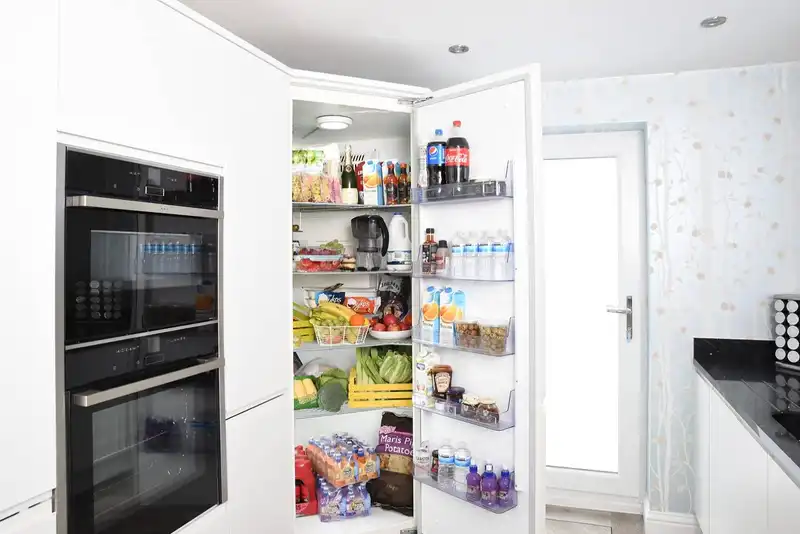
You can only get the most out of your freezers and refrigerators if you don't overload them. If there are too many items in a packed fridge or freezer, it will stop working properly, resulting in food that will lose temperature and slip into the danger zone. If you serve your customers food that hasn't been properly preserved at the proper temperature, you may find yourself in hot water if they get food poisoning. Your kitchen storage should be alright if you follow the proper storage practices and get rid of any out-of-date food.
7. Maintain hygiene
All equipment, shelves, and storage containers must be carefully cleaned every day to avoid contamination and bacteria build-up. Kitchens may get rather filthy, which is all the more reason to maintain strict cleanliness standards to protect your stored goods from any hazards that could damage your guests. To avoid contamination from water, dust, and grime, all food products should be kept at least 6-12 inches from the floor.
Preparedness measures for long term food storage
Long-term food storage is an essential part of preparing for a disaster or emergency. This can be accomplished by purchasing and storing freeze-dried, dehydrated, and canned foods. Here are some steps you can take to ensure proper long-term food storage preparation.
Assess your goals
Assessing your goals is the first step in planning your long-term food storage. Consider why you want to increase your food supply; this will help you figure out how much room you'll need. For example, if you want to have a three-day supply of foods on hand, you won't need as much storage space as if you want a month's worth of groceries.
Consider if you want your pantry to be fully stocked with all of your food necessities or just a few additional canned goods. Before you begin shopping, figure out what your long-term food storage goals are.
Take your location into account
The best place in your basement to store food for a long time is near an outside wall. Because that area of your home is one of the coldest, your food will stay fresh for a long period. If you don't have access to a cellar, any cool, dark space, such as a corner or closet, would suffice. If you live in a smaller house or apartment with limited storage, consider using the area under your bed or the top shelf of your closet.
Aim for ample storage space
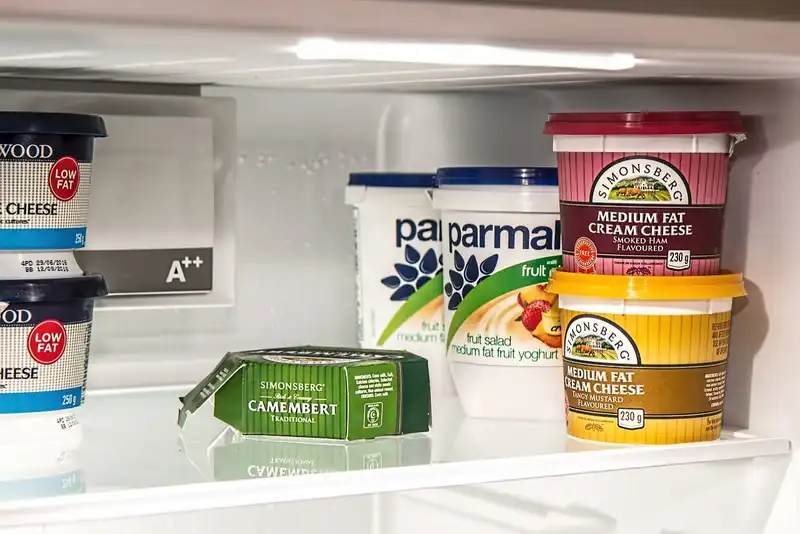
Consider putting wood or wire shelves in your pantry if you are unhappy with the quantity of storage space you have and can add more to avoid going low on the food count. You can build your shelves and enhance your capacity for long-term food storage with a few tools and some time.
Begin shopping
We'll go over how to develop your food supply in more detail later, but in the meantime, we'd like to provide some shopping advice. Start by picking up a few extra canned goods at the grocery store. To increase your food supply, try to take advantage of double coupon days and discounts. To save money, buy vegetables while it's in season. You can also buy fresh veggies from pick-your-own farms to be canned or pickled at home.
Effects of temperature, light, and moisture on food storage
Temperature, light, and moisture are three of the most important factors in preventing food deterioration in your storage. In the sections that follow, we'll go over how these conditions can affect your supplies and how you can manage them in your storage space.
Temperature
The temperature in a dry goods warehouse should be kept between 50 and 70 degrees Fahrenheit. The hotter your location, the faster your meals, especially canned goods, will spoil. It's a good idea to keep a thermometer in your storage area to monitor the temperature and avoid spoilage.
Light
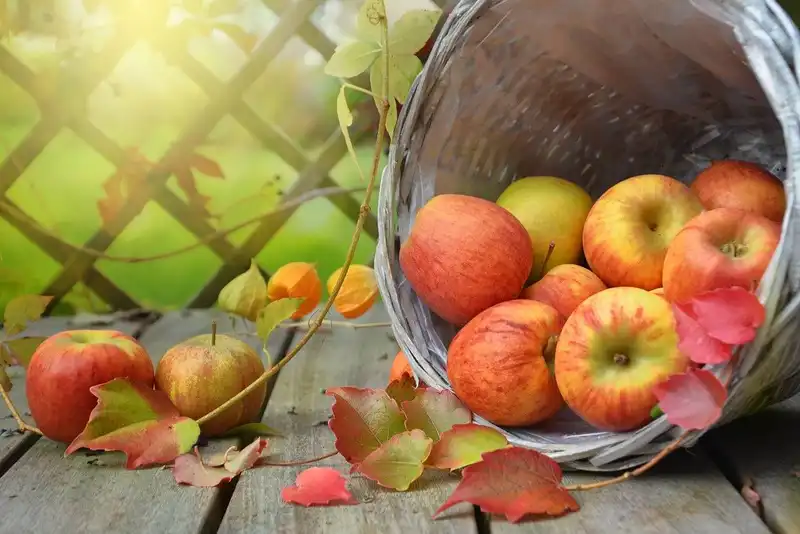
Light not only affects temperature but can also cause food to oxidize. Fats and pigments are the most affected by oxidation. When fat is oxidized, the nutritional value of the food diminishes, and the food becomes stale. Food can lose its natural color and seem faded or colored grey when the pigment is degraded. This can detract from the presentation of your cuisine and make customers unhappy with their meal. As a result, you should keep your storage as dark as possible. Food storage rooms should ideally be devoid of windows and equipped with artificial lighting that is turned on only when an employee is there.
Moisture
Mold and bacteria thrive in moist settings. Because both of these can be dangerous to your ingredients and supplies, it's important to maintain your storeroom's moisture levels under control. Moisture can cause your shelves to rust and damage the food they hold in some cases. If your storeroom has too much moisture, use a dehumidifier, and be sure to empty and clean it regularly.
Six methods of food storage
There are various methods for storing food, each with its own set of benefits and drawbacks. There are a few things to consider depending on which strategy you use.
1. Canning
Canning is a low-cost way to preserve food quality. Canned foods include applesauce, vegetables, jams and jellies, and infant purees.
The basic stages for proper canning are thoroughly washing the fresh produce you'll be using, peeling and hot packing if necessary, adding acids like lemon juice or vinegar if the food isn't already suitably acidic, and using self-sealing containers with lids. Canning jars are then processed for the required period, either by boiling water (for acidic fruits and vegetables) or by using a pressure canner (for low-acid fruits and vegetables). To ensure safety, this aids in the prevention of bacterial growth and the eradication of many diseases.
Canned foods also have a longer shelf life, however, some nutritional value is lost. During the heating process, 30-50 percent of vitamins A, C, thiamin, and riboflavin are lost, with an additional 5-20 percent loss per year. Less sensitive vitamins last longer and are found in somewhat lower concentrations than in fresh food. Vegetables can be tough if handled and canned rapidly, and they can retain a lot of their nutritional value. Also, you don't have to do anything with canned foods before eating them; you may consume them straight from the can.
2. Freezing
Most foods can be preserved using this method. Soups, baby purees, oats, and coffee grounds can all be frozen, as well as veggie burger patties, chopped fruit, and blanched veggies.
A well-kept freezer will keep food for a long time, after which you may safely thaw it (in the fridge or under cold water only) and cook it as desired.
Although there are a few risks associated with freezing, there are a few considerations. Freezer burn affects everything in the freezer and appears as grayish-brown blotches when air comes into contact with the food's surface. This does not make the food unsafe to eat, but it does cause it to become dry in some places. You can cut these sections off when the food is thawed. While some foods retain their flavor after freezing, others experience significant, and sometimes unpleasant, textural changes.
Frozen foods, no matter how much we wish they did, do not have an infinite shelf life. If soups and stews, as well as vegetables and fruits, are left unattended for an extended period, they can rot. To avoid storing foods in the back of your freezer and forgetting about them, write the date on the container in permanent marker and use or discard extremely old specimens regularly. Place the most recently frozen items at the back of the freezer and thaw and consume the older items first. This creates a natural rotation and, in the long run, reduces food waste.
3. Drying or Dehydration
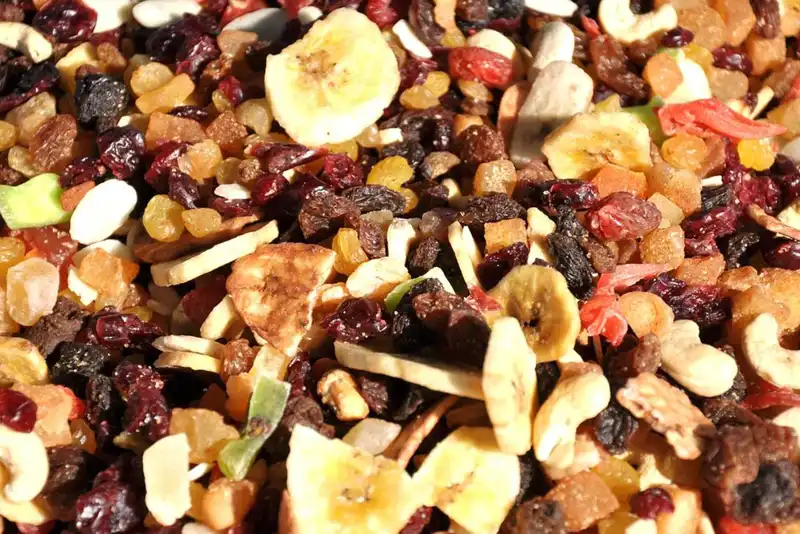
Fruits, vegetables, and herbs benefit greatly from this method of preservation. Food that has been dried tends to have a stronger flavor, costs very less, and is easier to store due to its smaller size.
What mechanism is at work? Dehydration decreases the water content of fresh foods, inhibiting bacterial growth. Using a professional dehydrator, hanging bunches of fresh herbs to dry, baking items in the oven, or even building your solar food dryer are all options. To help preserve certain fruits and vegetables, blanch them before drying them.
Dehydration, on the other hand, has several disadvantages. While many nutrients survive dehydration relatively unscathed, vitamins A, C, and thiamin are heat and air-sensitive (if blanched or baked in the oven).
Electric dehydrators also consume a lot of electricity, so you may save money by using one of the alternative home drying methods. Dehydrating food takes a long time frequently over ten hours so be prepared to be patient and plan if you decide to use this method. Preparing meals for drying takes time as well. Slicing and coring fruits, as well as spreading them out on a drying rack, are examples of tasks that may require human labor.
4. Fermentation
Fermenting foods is a terrific way to increase your probiotic (good bacteria) intake, which is beneficial to your digestive system and immunity. Lacto-fermentation, a bacterial activity that maintains and increases nutrients in food, is the first step in the fermentation process. Chopping, grinding, or otherwise preparing your raw food, choosing on the culture to use (usually salt, whey, or a starting culture), making and adding brine, and storing everything in an airtight container in a cold climate are the fundamental processes.
Fermentation necessitates caution, as food might spoil if you don't utilize fresh vegetables or distilled or filtered water during the procedure. Fermentation also utilizes a lot of salt, which helps to preserve food by drawing out the water content and reducing bacterial growth. For many people, this is a disadvantage. Fresh sauerkraut, kimchi, and other salty fermented vegetables can be used as a "salt source" in various dishes.
5. Pickling
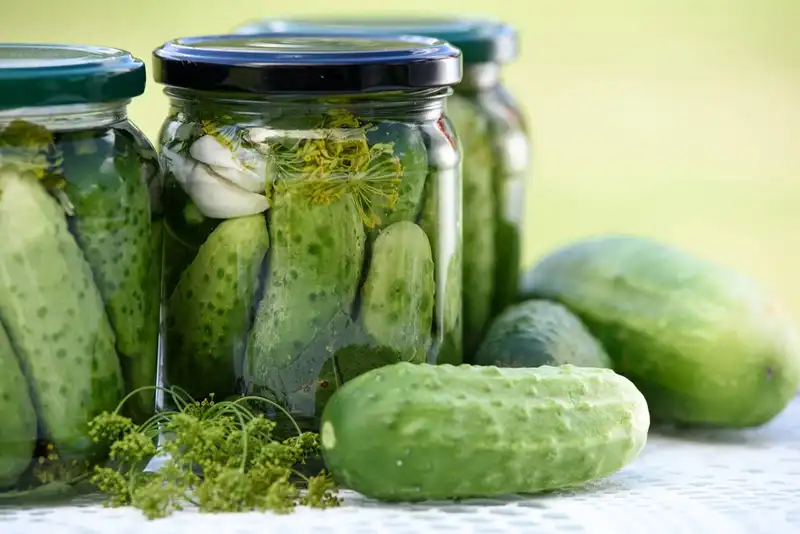
Pickling, like fermentation, can be done on a variety of vegetables other than cucumbers. Have you tried pickled green beans before? Yum! Beets, cauliflower, peppers, cabbage, and even fruits like lemon or mango are all widely pickled foods.
Pickling is the method of preserving food in a high-acid solution, either naturally or by adding vinegar and salt (and sometimes sugar). It keeps food from spoiling and extends its shelf life. Many pickled food combinations are also attractive and make excellent gifts!
Pickling at home requires only a few items. The fruit or vegetable, a high-acid brine solution (water, vinegar, salt, and optional sugar), and an airtight container are all you need.
6. Cold Storage
Cold storage products such as apples, pears, root vegetables, celery, and cabbage can last for several months if properly stored.
To get the most out of your food, make sure you're aware of and adhere to the proper storage temperatures and conditions. Apples, for example, should be stored in a wet, permeable bag at temperatures just above freezing.
Even though it may be tempting to bring your fresh produce home and line it all up on the counter, it's better not to do so because it can cause the produce to rot. Ethylene gas is produced by many fruits and vegetables, including apples, cantaloupe, blueberries, bananas, potatoes, and tomatoes, and it causes items around them to ripen and brown faster.
To keep fruits and vegetables as fresh as possible, they must be preserved in specific ways. Apricots, grapes, strawberries, green onions, and asparagus should be put in the fridge immediately. Avocados, kiwis, peaches, and pears should all be allowed to ripen on the counter before being stored in the refrigerator. Pomegranates, mandarin oranges, ginger, and jicama should never be refrigerated because they taste best at room temperature.
What is the role of automation in food storage?
It's impossible to keep track of what you've preserved where and in what shape, let alone the expiration dates of the food you've preserved. For a money-making business, not knowing the exact expiration date or putting stored food in the back of the freezer is not ideal. As a result, automation is the ideal option.
Zip Inventory is a terrific inventory management program that can save you not only money but also time compared to employing someone to go through a sheet or the refrigerator in your restaurant kitchen for hours. When you use the Zip Inventory mobile app to conduct an inventory count, the findings are automatically linked to the cloud. This makes your inventory available at the click of a button.
Also, with a change of hands, remembering the technique used to store a specific type of item will be difficult. It's as if a new chef has arrived in the kitchen. You'd like to keep things consistent. Zip Inventory can be used to ensure that recipe instructions for the food storing menu, as well as prep items, are followed with instructional videos, ensuring a consistent result regardless of who prepares and stores it.
The following are some of the other Zip Inventory features-
- It can establish variable count frequencies.
- View the total amount of menu items that have been sold.
- Errors should be corrected before they become an issue.
- Identify ways to reduce food waste.
- Keep your team informed about new recipes.
- Allows you to look at inventories anytime.
Zipchecklist Features.
- Helps you develop standard operation procedure checklists
- Keep sop templates up-to-date
- Manages business tasks that need to be completed
- Let's you access your task lists on any device
- Keep track of shared task lists
- You can make task list adjustments based on employee productivity reports
- Let's you send and receive task manager alerts
- Manages task assignments on-the-go
Easily track food safety with a digital checklist.
Try a free download now.
